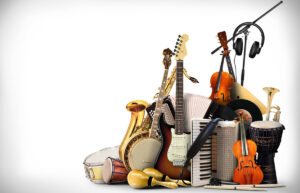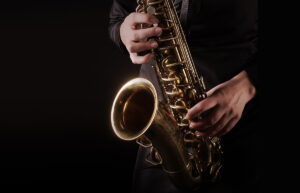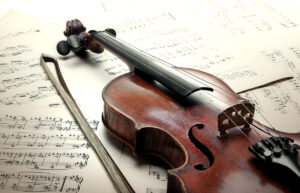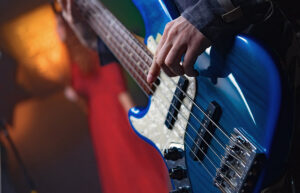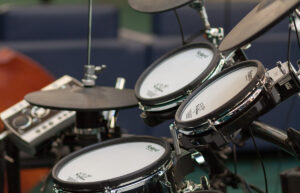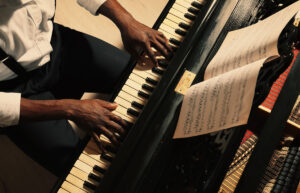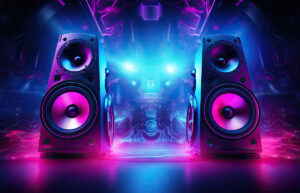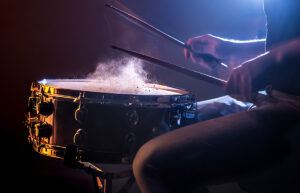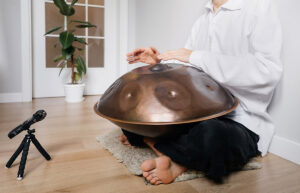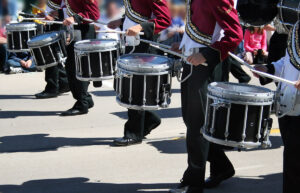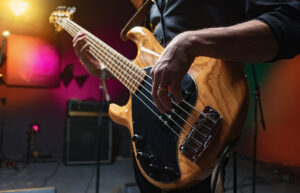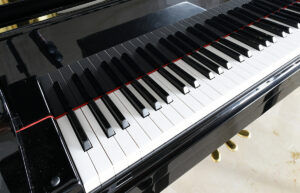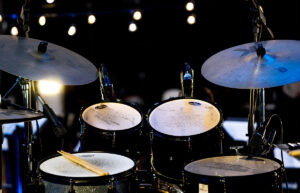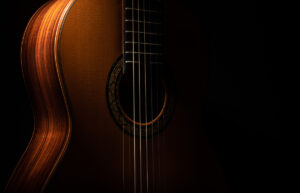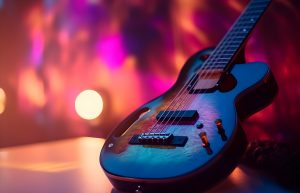Top 10 Bass Guitar Brands for 2023: A Complete Buyer’s Guide

Whether you’re a pro or just a beginner, I guarantee that this guide will help you find the ultimate groove machine that resonates with your style. Tune in for a symphony of choices as we explore the best in the bass world. Let the bass boom!
Welcome to TheDemoStop, now join the community!
Connect with artists, fans and producers around the world.
Best bass guitar brands
For an absolute beginner, bass guitars are stringed musical instruments designed to produce low-frequency sounds, providing the foundation and rhythm in many music genres. They typically have four strings, but many advanced bass guitar players choose five- and six-string basses for varied tones.
In my experience, if you want to buy the best bass guitar, choose a brand with good reviews to be confident about the better build, materials, and electronics, resulting in superior sound, playability, and durability.
You should choose a brand that provides a reliable and enjoyable playing experience, which is crucial for professional musicians and enthusiasts seeking the best tone and performance.
Long live the bassists!
Fender

Fender is a brand renowned for its exceptional build quality and tonal sound. The founder of Fender, Leo Fender, was an ace guitar designer and pioneered bass guitar development. Founded in the early 1940s, Leo Fender initially focused on repair than manufacture. Slowly, Leo ventured into manufacturing solid-body guitars. By the early 50s, they rolled out the first electric bass guitar. The Fender legacy has since influenced bass playing. The Fender bass line has had iconic designs such as the Precision bass, Jazz bass, and Meteora models. My personal favorite is the Precision or the P-bass. I can vouch for the quality of the bass as I have spent hours on the model honing my skills. I list some of the key reasons why Fender is the preferred choice of legendary artists such as James Jamerson, Roger Waters, and Steve Harris:
- Features: Versatile tones, solid construction.
- Specifications: Single-coil or split-coil pickups with active EQ; Alder or ash bodies, maple or rosewood fretboards.
- Pros: Classic sound, widely used in various genres, reliable.
- Cons: Higher-end models can be pricey.
- Suitable: All-around players, from beginners to professionals.
- Best-selling models: Fender Precision Bass, Fender Jazz Bass.
- Price range: Standard models can range from $600 to $3,000. American Professional series can go higher.
Warwick

Warwick, a German brand established in 1982, stands tall among the elite bass guitar manufacturers. Warwick has become synonymous with quality, innovation, and a distinctive growling bass tone. Warwick gained prominence for its innovative use of tonewoods, crafting basses with a focus on playability and sonic excellence. The Warwick Thumb Bass, introduced in the 80s, became an instant classic. Some of my favorite artists who use Warwick include Robert Trujillo of Metallica and Jack Bruce of Cream.
- Features: High-quality materials, unique body shapes, and powerful pickups.
- Specifications: MEC (Mechatronic) pickups; use of woods like bubinga, wenge, and ovangkol for bodies and necks.
- Pros: Rich, deep tones, excellent build quality.
- Cons: Higher price range, might be heavy for some players.
- Suitable: Professional musicians, especially those into rock and metal.
- Best-selling models: Warwick Corvette, Warwick Streamer.
- Price range: Warwick’s standard range is around $800 to $3,000. Custom Shop models can be higher.
Ibanez

Ibanez, a Japanese brand founded in 1957, has evolved from a classical guitar manufacturer to a powerhouse in the bass world. Ibanez gained traction in the 70s with its popular Musician and Roadster series. In the 80s, the brand embraced extended-range basses and ergonomic designs, setting trends in the industry. Ibanez players, like Fieldy of Korn and Sharlee D’Angelo of Arch Enemy, contributed to the brand’s popularity in rock and metal.
- Features: Sleek design, fast necks, versatile electronics.
- Specifications: Basswood, mahogany, or ash bodies with thin neck profiles, active EQ pickups on some models.
- Pros: Great for various playing styles, affordable options available.
- Cons: Some models may lack the depth of tone compared to others.
- Suitable: Players in rock, metal, and fusion genres.
- Best-selling models: Ibanez SR Series, Ibanez BTB Series.
- Price range: Entry-level models start at $200. High-end and signature models can go up to $3,000 or more.
Ernie Ball Music Man

Ernie Ball Music Man, established in 1984, emerged as a force in the bass world and gained acclaim for its forward-thinking designs with traditional craftsmanship. Music Man introduced the StingRay bass in 1976, a game-changer with its humbucking pickup and active preamp. This model became an industry standard, defining the modern sound of the bass guitar. Notable StingRay players include Tony Levin and Flea, solidifying the brand’s reputation among top-tier musicians.
- Features: High-quality craftsmanship, active electronics.
- Specifications: Equipped with a 3-way switch for pickup selection; uses ash or alder bodies, maple or rosewood fretboards.
- Pros: Clear and punchy tones, excellent playability.
- Cons: Higher price range.
- Suitable: Professional musicians, especially in rock and funk.
- Best-selling models: Music Man StingRay, Music Man Bongo.
- Price range: Music Man basses typically start around $1,500 and can go up to $3,500 or more for premium models.
Welcome to TheDemoStop, now join the community!
Connect with artists, fans and producers around the world.
Rickenbacker

Rickenbacker, an American brand with a history dating to the 1930s, has left an indelible mark on the bass world with its distinctive designs and unique tonal characteristics. Rickenbacker introduced the 4000 series basses in the 60s, featuring the iconic stereo output and signature toaster pickups. These instruments became synonymous with the sound of bands like The Beatles and The Who. Bass legends such as Paul McCartney and Chris Squire favored Rickenbacker basses, contributing to the brand’s iconic status. If you desire a vintage appeal, I am confident Rickenbacker will best suit you.
- Features: Distinctive look, unique tonal characteristics.
- Specifications: Unique high-gain single-coil pickups, maple bodies with a distinctive “cresting wave” shape.
- Pros: Iconic sound, great for classic rock and progressive styles.
- Cons: Pricey, not as versatile in terms of tones.
- Suitable: Players who want a vintage, retro sound.
- Best-selling model: Rickenbacker 4003.
- Price range: Rickenbacker basses are in the higher range, starting at $1,900 and going up to $3,500 or more.
Alembic

Alembic, founded in 1969, stands at the pinnacle of bass guitar craftsmanship, exotic tonewoods, and cutting-edge electronics with unparalleled attention to detail and sonic excellence. The Series I and Series II basses, introduced in the 70s, set the standard for high-end, customizable bass guitars. If you wish to go custom, I highly suggest trying Alembic. Stanley Clarke, John Paul Jones, and Phil Lesh are among the elite bassists who have embraced Alembic basses.
- Features: Custom designs, high-end materials, unique electronics.
- Specifications: Customizable pickup options (single-coil and humbucker); high-quality woods such as cocobolo, purpleheart, and mahogany.
- Pros: Exceptional craftsmanship, wide tonal palette.
- Cons: Costly.
- Suitable: Serious professionals and collectors.
- Best-selling models: Alembic Series II, Alembic Stanley Clarke Signature.
- Price range: Alembic basses are high-end, ranging from $4,000 to over $10,000 for custom models.
Kiesel

Kiesel, a family-owned company established in 1946, has evolved into a modern force in bass guitar manufacturing, offering customizable instruments focusing on high-performance playability. Known initially as Carvin, the company rebranded to Kiesel in 2015, emphasizing its commitment to custom-made instruments. Players can choose from tonewoods to electronics, allowing for a personalized instrument that meets specific sonic and aesthetic preferences. Isn’t that alluring? Jeff Berlin, an acclaimed bass virtuoso, has been associated with Kiesel basses, showcasing the brand’s appeal to skilled players seeking personalized instruments.
- Features: Customizable options and modern designs.
- Specifications: Lithium pickups, a 3-band EQ, tonewood options, including alder, swamp ash, and walnut.
- Pros: Wide range of customization, quality build.
- Cons: Limited availability in some regions.
- Suitable: Players who want a personalized instrument.
- Best-selling models: Kiesel Vader, Kiesel Icon.
- Price range: Kiesel basses are customizable, and prices start around $1,000, with custom options leading to higher costs.
Schecter

Schecter, founded in 1976, has become a powerhouse in the rock and metal bass scene, offering instruments with aggressive designs, high-output pickups, and modern features. Schecter gained prominence in the 80s with its custom shop guitars and basses. The brand’s Diamond Series, introduced in the 90s, brought high-quality instruments to a broader audience. Players like Nikki Sixx of Motley Crue and Robert DeLeo of Stone Temple Pilots use Schecter basses, contributing to the brand’s popularity in the rock and metal genres.
- Features: Aggressive designs, high-output pickups.
- Specifications: Range of pickups, including Schecter Diamond series and third-party options; 2 or 3-band EQ; uses basswood, mahogany, or ash bodies.
- Pros: Great for heavy genres, affordable options available.
- Cons: Some models might be too heavy for some players.
- Suitable: Rock and metal players.
- Best-selling models: Schecter Stiletto Series, Schecter Diamond Series.
- Price range: Schecter offers a wide range, with some entry-level models around $500 and high-end models reaching $2,000 or more.
G&L

G&L, founded in 1979 by Leo Fender and George Fullerton, carries the legacy of Leo Fender’s innovations, offering instruments that blend traditional craftsmanship with modern enhancements. G&L introduced the L-2000 and L-2500 basses in the 80s, incorporating features like the Magnetic Field Design pickups and the Tri-Tone active/passive electronics, showcasing the brand’s commitment to innovation. Influential bassists like Flea and Marcus Miller preferred G&L basses.
- Features: Leo Fender’s innovations and various pickup configurations.
- Specifications: Features G&L Magnetic Field Design Pickups; Uses different tonewoods, including alder and swamp ash.
- Pros: Quality build, versatile tones.
- Cons: Less mainstream than Fender.
- Suitable: Players who appreciate Fender-style instruments with some modern twists.
- Best-selling models: G&L L-2000, G&L JB-2.
- Price range: G&L basses typically start at approximately $1,000 and can go up to $2,500 or more for premium models.
Welcome to TheDemoStop, now join the community!
Connect with artists, fans and producers around the world.
Spector

Spector, founded in 1976, has significantly impacted the bass world with its unique designs, comfortable playability, and many tonal possibilities. The NS-2, introduced in the late 70s, brought the brand into the spotlight. Bassists like Doug Wimbish and Stuart Zender have been associated with Spector basses.
- Features: Unique body designs, active electronics.
- Specifications: Equipped with EMG or Bartolini pickups; use maple or alder bodies with rosewood or ebony fretboards.
- Pros: Punchy and defined tones, comfortable playability.
- Cons: Some models can be expensive.
- Suitable: Versatile players, especially those in modern styles.
- Best-selling models: Spector Legend Series, Spector Euro Series.
- Price range: Spector basses start around $500 for entry-level models, while their higher-end Euro and USA series can range from $1,500 to $3,000 or more.
FAQs
What is the most famous bass brand?
Fender is widely regarded as the best guitar brand, as it is a package of iconic designs, reliability, and versatility. Their Precision and Jazz Bass models have impressed me the most.
What are top bass guitar brands of 2023?
After trying the various brands, we have compiled the following list of the best bass guitar brands in 2023:
- Fender
- Warwick
- Ibanez
- Ernie Ball Music Man
- Rickenbacker
- Alembic
- Kiesel
- Schecter
- G&L
- Spector
Which are the affordable bass guitar brands?
Some of the affordable bass guitar brands are:
- Squier by Fender
- Ibanez
- Epiphone
- Yamaha
What is the best bass guitar for beginners?
The best bass guitars for beginners are:
- Squier Affinity Series Precision Bass
- Ibanez GSRM20 Mikro Short-Scale Bass
- Yamaha TRBX174EW
- Epiphone Toby Standard IV
- Fender Player Series Jazz Bass.
Which brands are the trusted bass guitar brands?
Here are some of the trusted bass guitar brands:
- Fender
- Warwick
- Ibanez
- Ernie Ball Music Man
- Rickenbacker



